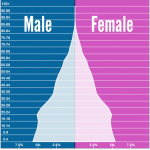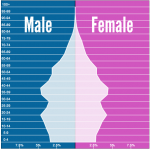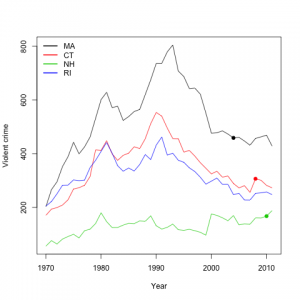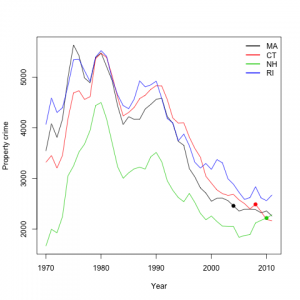Petty drug users fill NZ homes?
Michelle Gosse points us to a discussion of minor drug crime on Stuff. The headline “Petty drug users fill New Zealand jails” is definitely off, but most of the rest is just a bit messy.
The primary statistical issue is what epidemiologists call “incidence vs prevalence”, economists call “stocks vs flows”, and point-process mavens call “length-biased sampling”. Because minor drug offenses lead to short sentences, offenders don’t stay in prison long, and so are a much smaller fraction of the prison population than they are of the court workload. Specifically, as Michelle calculates, the figures mean there were at most an average of about 400 ‘petty drug users’ in NZ jails over the six years in question, from a prison population of more than 8000. The ‘petty drug users’ are less than 5% of the prison population. How much less than 5% is hard to calculate, because there’s a mixture of data on number of people and data on number of charges or offences, which aren’t just one to a customer.
The main point of the story is that lots of people are being prosecuted for minor drug crimes, and that this is dumb. That, I can certainly agree with. But one more statistical point is being missed. We get quotes like
The New Zealand Drug Foundation said the figures were alarming and showed the court-focused treatment of minor offenders was not working.
But Justice Minister Judith Collins said all drug offending – no matter how minor – should be dealt with through the criminal justice system.
Looking at the figures, about 3000 people a year are charged with cannabis possession. Based on drug-use survey data, about 385000 people use cannabis sometime during a year, so the criminal justice system is actually missing more than 99% of them. Or, put another way, the proportion of petty drug users in jails (<5%) is substantially lower than in the NZ population as a whole (>14%). In order to get convicted, you need to be guilty both of cannabis possession and of coming to the attention of the police. You don’t need to be very cynical to worry about the impact of differential enforcement of the law.








